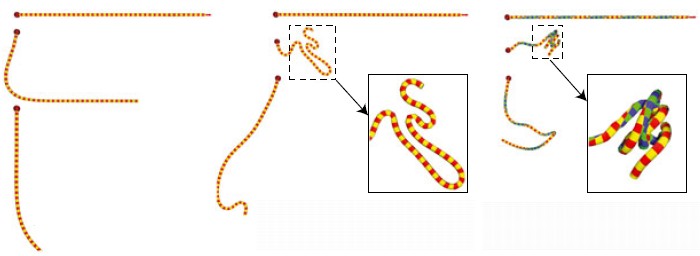Proceedings of Motion in Games 2011, pp.192-203, 2011.
"Animating Strings with Twisting, Tearing and Flicking Effects," Computer Animation and Virtual Worlds, Vol. 23, No. 2, pp.113-124, 2012.
 |
 |
 |
 |
||
| Various twisted strings (left) and torn ropes of a suspension bridge (right). | ||

- Traditional inextensible (strain limited) string directly falls down when tension is suddenly released (left).
- With the proposed model, a string bounces back (center).
- Even more complex flicking behaviors can be seen if a string is twisted beforehand (right).
Video game examples using the string model that twists, tears, and flicks.

